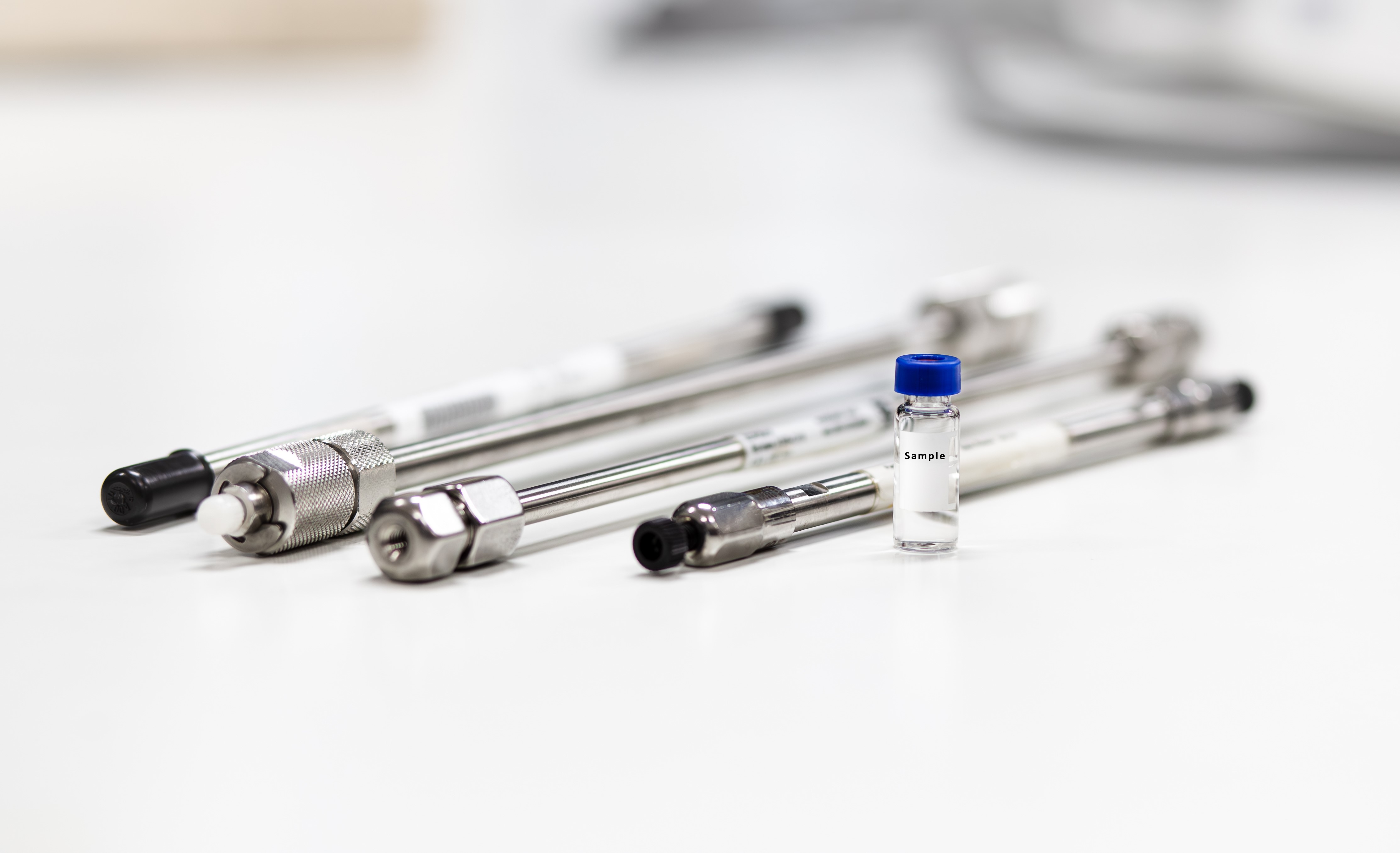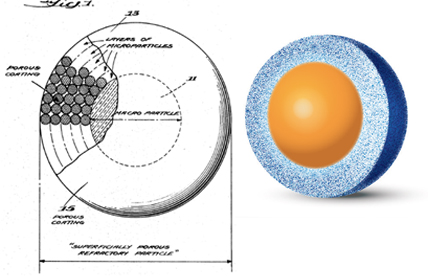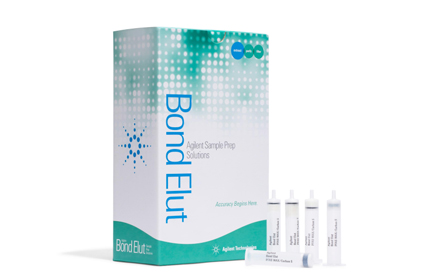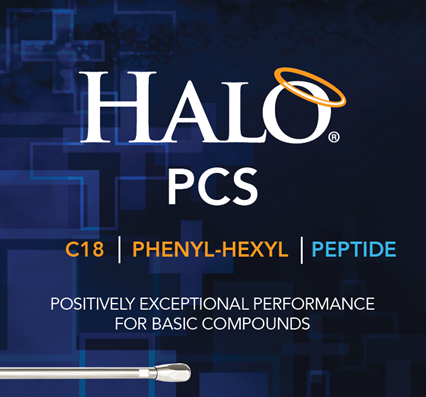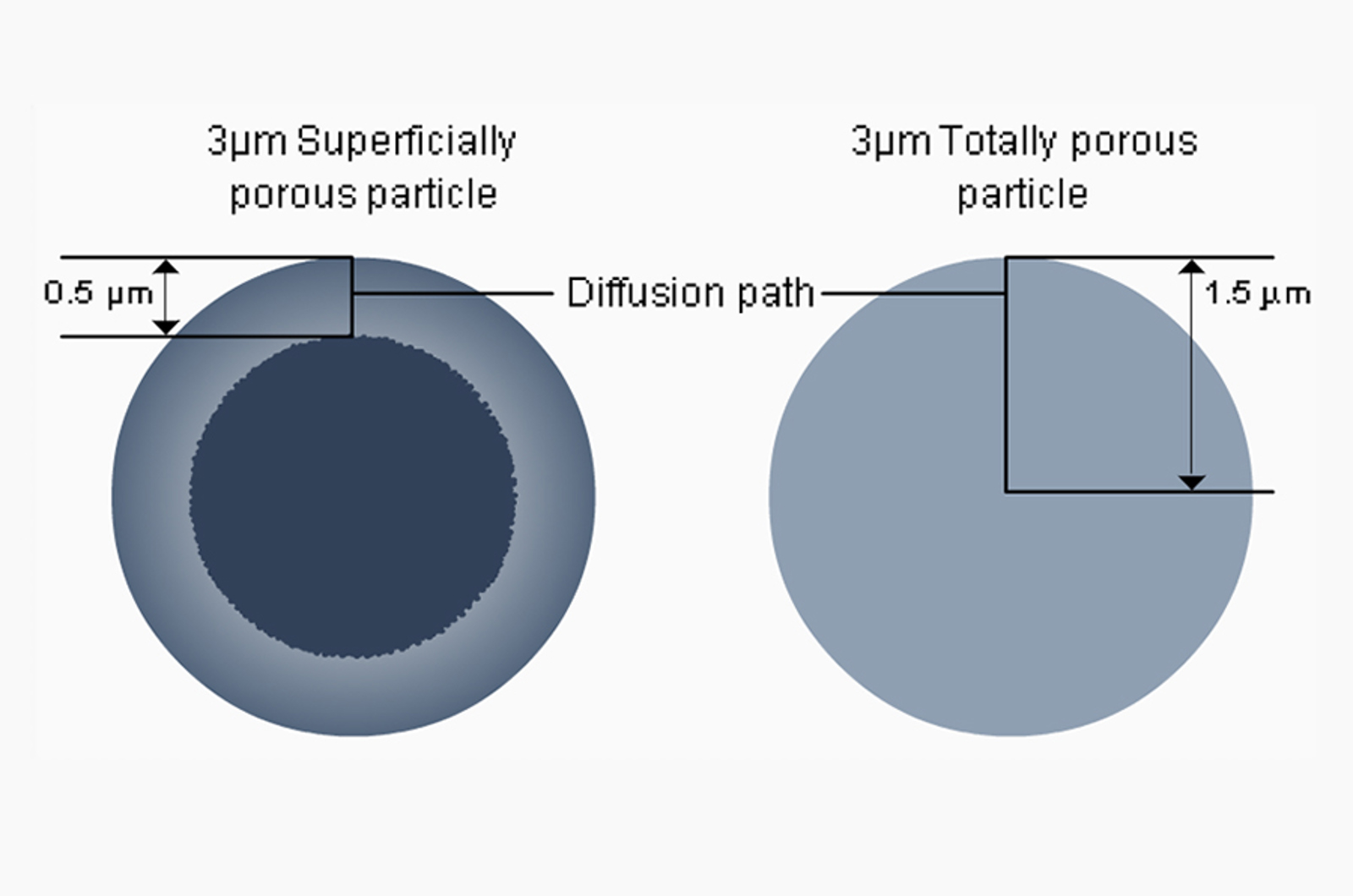Per- and polyfluoroalkyl substances (PFAS) remain among the most challenging compounds to analyse in modern environmental testing. Their chemical stability, persistence, and potential health impacts have made them a global focus for monitoring and regulation. Reliable, sensitive, and reproducible analytical methods are therefore essential for accurate detection and quantification.
The HALO® ENVIROCLASS range from Advanced Materials Technology is purpose-built to meet these demands. Offering a suite of high-performance phases designed specifically for PFAS analysis, the expanded HALO® PFAS solutions portfolio now includes three complementary columns – HALO® PFAS Delay, HALO® PFAS C18, and HALO® PFAS PCS Phenyl-Hexyl – each designed to tackle different analytical challenges in PFAS workflows.
HALO® PFAS Delay – Eliminating Background Contamination
One of the most persistent challenges in PFAS analysis is background contamination originating from instrument components, solvents, or mobile phases. Even trace amounts of contamination can affect quantification accuracy, especially at the low detection limits required by regulatory methods.
The HALO® PFAS Delay column provides a simple yet highly effective solution to this issue. Positioned upstream of the sample injector, it delays background PFAS compounds, preventing them from co-eluting with the analytes of interest.
This performance is achieved through a highly retentive, endcapped silane bonded phase, specifically selected for its ability to consistently delay background PFAS species. Among these, perfluorooctanoic acid (PFOA) is a common contaminant originating from instrument materials. Separating background PFOA from that present in the sample is crucial for accurate quantification, as demonstrated in Figure 1. The result is improved data reliability and reduced analytical interference, enabling laboratories to achieve confident trace-level quantitation.


Figure 1: PFOA originating from the sample separated from PFOA originating from the instrument using HALO® PFAS C18 Column (p/n 92812-613) and HALO® PFAS Delay Column (92113-415). Full method conditions in application note [1].
HALO® PFAS C18 – Method-Qualified Performance Across PFAS Classes
The HALO PFAS column has been developed to meet the analytical demands of both legacy and emerging PFAS, offering exceptional performance across a wide range of compounds – from short- to long-chain species, including both linear and branched isomers. Designed in line with EPA methods 1633, 533, 537.1, and 8327, this phase provides an application-assured solution for reliable PFAS detection and quantification.
Now renamed HALO® PFAS C18, this column features a densely bonded and extensively endcapped C18 90 Å stationary phase that ensures sharp, symmetrical peaks and consistent selectivity. Utilising Fused-Core® particle technology, it delivers outstanding separation efficiency, low back pressure, and highly reproducible retention.
The introduction of the HALO® PFAS C18 2.0 µm superficially porous particle further enhances performance, providing greater peak capacity and resolution for faster, more efficient separations without compromising analytical performance (Figure 2).


Figure 2: HALO PFAS C18 2 µm superficially porous particle allows for reduced peak widths and higher peak capacities compared to larger particle sizes. Full method conditions in application note [2]
HALO® PFAS PCS Phenyl-Hexyl – Retaining Ultra-Short-Chain PFAS
Detecting ultra-short-chain PFAS remains one of the most challenging aspects of environmental analysis. These highly polar, low-molecular-weight compounds are notoriously difficult to retain under conventional reversed phase conditions. The HALO® PCS Phenyl-Hexyl column has demonstrated significantly improved retention compared with a C18 phase (Figure 3), providing a valuable solution for the quantification of these challenging analytes.


Figure 3: Increased retention using HALO PCS Phenyl-Hexyl compared to HALO PFAS C18 [3]
Now part of the HALO® ENVIROCLASS range, the HALO® PFAS PCS Phenyl-Hexyl column delivers proven confidence for PFAS analysis through method-qualified lot testing. Built on innovative Positively Charged Surface (PCS) technology, it enhances the retention of highly polar PFAS compounds. The PCS Phenyl-Hexyl stationary phase provides unique selectivity that enables comprehensive PFAS profiling – effectively retaining compounds that typically show poor retention on conventional reversed phase columns, while simultaneously separating short- and long-chain PFAS species within a single method (Figure 4). The result is reliable, high-quality data with superior retention, sharp peak symmetry, and high-resolution separations, even for the most challenging analytes.


Figure 4: Combined ultra-short and long-chain PFAS analysis using HALO® PFAS PCS Phenyl-Hexyl column (p/n 92882-619). Full method conditions in application note [4]
Expanding the Capabilities of PFAS Analysis
As environmental testing continues to evolve, the expanded HALO® PFAS column range is designed to meet the increasing analytical demands of PFAS determination. By combining method qualified lot analysis, advanced surface chemistry, and the proven performance of Fused-Core® technology, HALO® columns enable laboratories to meet increasingly stringent PFAS regulatory requirements. From background suppression to broad-range separations and ultra-short-chain retention, the HALO® PFAS range offers a complete HPLC column toolkit for the accurate, reproducible, and high efficiency analysis of these persistent environmental contaminants.

